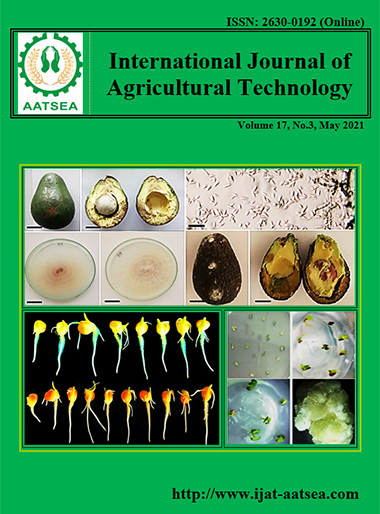The connection between rubber production and livelihood under rubber farming system along with oil palm growing in the southeast coast of Thailand
Main Article Content
Abstract
The results showed that the farmers still relied on the old production technology for rubber and oil palm. The financial cost of production was quite highly compared with the quality of livelihood. The study found that farmers still lacked adaptation skills for self-development and easily vulnerable to change the condition sof unstable weather and price fluctuation. The purpose of linking their socioeconomic status, the society, rubber production with sustainable livelihood of smallholding rubber farming, oil palm growing under rubber production system, and other agricultural activities indicated that economic factors such as price of production, cost of production, income level, and poor saving culture had considerable effect on the finances of the households. Social factors, such as lack of information, poor educational level and other experiences were combined with social capital and adaptation of rubber farmers for changing times. To reduce the limitations on their livelihood and production outputs, the farmers needed to learn the proper techniques for production that would improve the efficiency of the production process and lead to harnessing resources effectively. These would positively impact their natural capability to earn their livelihood. The format of linkage between production and livelihood was composed of 4 related sub-systems. These were the production system, support system, strategic system, and livelihood achievement system
Article Details

This work is licensed under a Creative Commons Attribution-NonCommercial-NoDerivatives 4.0 International License.
References
Agricultural Extension Office (2015). Evaluation of approach to develop farmers’ market. Report, Office of Agricultural Economics, Ministry of Agriculture and Cooperatives.
Department for International Development (DFID) (2001). Sustainable livelihood guidance sheets. (Working paper). 94 Victoria Street, London SW1E 5JL, 48.
Intraskul, S. and Somboonsuke, B. (2016). ASEAN Economic Community: Opportunity and Feasibilities of Thailand’s Rubber Industry Investment. Journal of Agricultural Technology, 12:579-589.
Masae, A., Somboonsuke, B. and Sabaiying, M. (2007). Modernization and Livelihood Adaptation in Rural Communities. Conferences. Southern Thailand English Language Teaching/Cultural Change Conference, (pp. 76-77). January 29-30, 2007 at The Hansa JB Hotel, Hat Yai. Songkhla: Faculty of Liberal Art, Prince of Songkla University.
Office of Agricultural Economics (2016). Agricultural production data. Retrieved from: http://www.oae.go.th/production.html.
Office of the National Economic and Social Development Council (2016). The tenth national economic and social development plan (2007-2011). Bangkok, Thailand: Office of the Prime Minister.
ROAT (2018). Thai Natural Rubber Management of whole system strategic plan 2017-2021.Rubber Authority of Thailand, Bangkok,Thailand: 105 pages.
Sapram, N. and Chaigarun, S. (2007). Sustainable Agriculture Processes and Indicators. Nonthaburi, Thailand: Sustainable Agriculture Foundation.
Somboonsuke, B., Yincharoen, A., Kongmanee, C. and Phitthayaphinant, P. (2019). Rubber production system and livelihood of smallholding rubber farming system (SRFS) in southern Thailand: A case study in provinces of Nakhon Si Thammarat, Phatthalung and Trang.’ International Journal of Agricultural Technology, 15:645-664.


